southfork
Silver Member
- Joined
- Jun 15, 2014
- Messages
- 2,506
- Reaction score
- 8,246
- Golden Thread
- 0
- Location
- California
- Primary Interest:
- All Treasure Hunting
Upvote
0
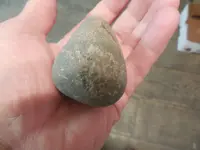
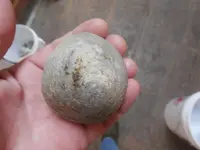
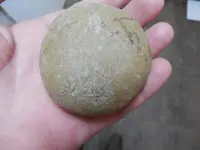
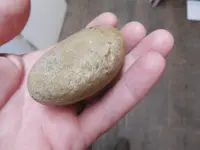
Post away the one I posted is a hammer stone I have stone drifts or punches made for finishing which are smaller also manos that were used for milling and pounding with one side polished and the ends battered . Post away show your examples I'm here to learn and maybe help others to identify artifacts .Now there are 2 different type of Hammer Stones in my area. 1 is a hammer for breaking chunks and the other is a "Pecking Stone" which by the way is a grainy type like the one you are holding southfork. Pecking Stones were for more of a finishing stone rather than a Hammer. I have some for examples if you would like to see one of each? Nice find and thanks for the post yours is a nice example.
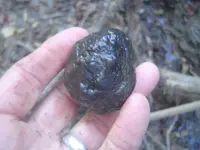 This photo is of a knapping stone it is almost perfect round from making strikes from all angles, and there are no finger holes just dents where it was struck all around.
This photo is of a knapping stone it is almost perfect round from making strikes from all angles, and there are no finger holes just dents where it was struck all around.
You need to do a little research there's a lot of grooved stone tools . Your napping stone is far from perfectly round and is doubtful if its an artifact at all jmo .This is JMO you will find all types of hammer stone's and we tend to group them all under one name (hammer stone). You had stone used has a maul, like to break spalls from a larger stone, the you had stones that was used to knapp with but most of these tend to end up almost completely rounded from making strikes from all angles. Then I believe like it was said they used stones to just crush nuts, roots and all sorts of things. Now some of you may not go along with this but I don't believe in the finger hold grooves, stone tools were not something that they took the time to do this, and I know we all have found stones that just fit that well in our hands, but I believe them to be a natural groove that just happened that way.View attachment 1051356This photo is of a knapping stone it is almost perfect round from making strikes from all angles, and there are no finger holes just dents where it was struck all around.
